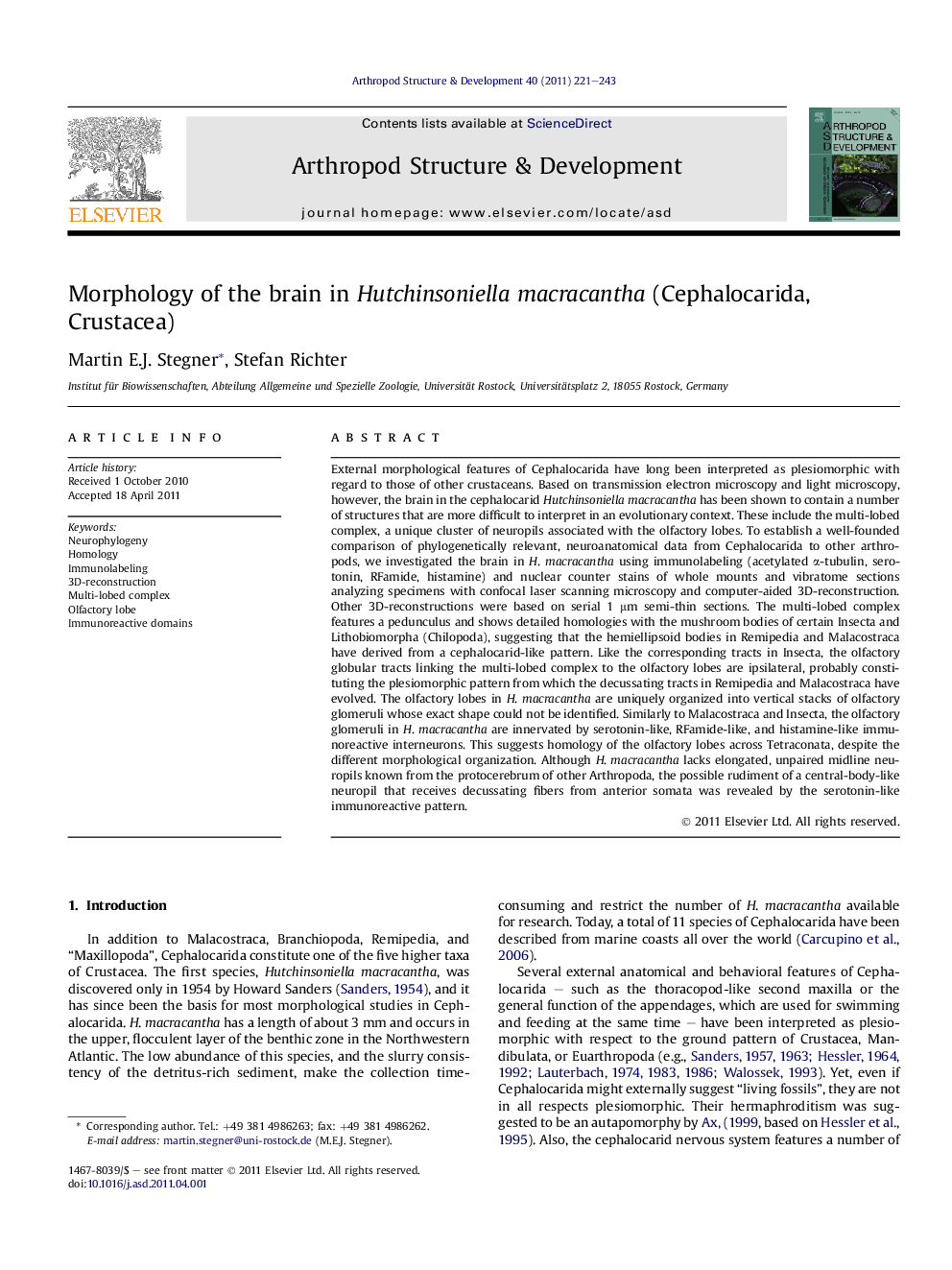| کد مقاله | کد نشریه | سال انتشار | مقاله انگلیسی | نسخه تمام متن |
|---|---|---|---|---|
| 2778782 | 1153166 | 2011 | 23 صفحه PDF | دانلود رایگان |

External morphological features of Cephalocarida have long been interpreted as plesiomorphic with regard to those of other crustaceans. Based on transmission electron microscopy and light microscopy, however, the brain in the cephalocarid Hutchinsoniella macracantha has been shown to contain a number of structures that are more difficult to interpret in an evolutionary context. These include the multi-lobed complex, a unique cluster of neuropils associated with the olfactory lobes. To establish a well-founded comparison of phylogenetically relevant, neuroanatomical data from Cephalocarida to other arthropods, we investigated the brain in H. macracantha using immunolabeling (acetylated α-tubulin, serotonin, RFamide, histamine) and nuclear counter stains of whole mounts and vibratome sections analyzing specimens with confocal laser scanning microscopy and computer-aided 3D-reconstruction. Other 3D-reconstructions were based on serial 1 μm semi-thin sections. The multi-lobed complex features a pedunculus and shows detailed homologies with the mushroom bodies of certain Insecta and Lithobiomorpha (Chilopoda), suggesting that the hemiellipsoid bodies in Remipedia and Malacostraca have derived from a cephalocarid-like pattern. Like the corresponding tracts in Insecta, the olfactory globular tracts linking the multi-lobed complex to the olfactory lobes are ipsilateral, probably constituting the plesiomorphic pattern from which the decussating tracts in Remipedia and Malacostraca have evolved. The olfactory lobes in H. macracantha are uniquely organized into vertical stacks of olfactory glomeruli whose exact shape could not be identified. Similarly to Malacostraca and Insecta, the olfactory glomeruli in H. macracantha are innervated by serotonin-like, RFamide-like, and histamine-like immunoreactive interneurons. This suggests homology of the olfactory lobes across Tetraconata, despite the different morphological organization. Although H. macracantha lacks elongated, unpaired midline neuropils known from the protocerebrum of other Arthropoda, the possible rudiment of a central-body-like neuropil that receives decussating fibers from anterior somata was revealed by the serotonin-like immunoreactive pattern.
► Combining present-day techniques, we re-investigated the brain in Cephalocarida.
► Their multi-lobed complex corresponds to the mushroom bodies in certain Hexapoda and Chilopoda.
► This implies that the secondary olfactory center in the ur-mandibulate was cephalocarid-like.
► Immunoreactive interneurons innervate the cephalocarid olfactory lobes, like in other tetraconates.
► A protocerebral, immunoreactive domain may constitute the rudiment of a central body precursor.
Journal: Arthropod Structure & Development - Volume 40, Issue 3, May 2011, Pages 221–243